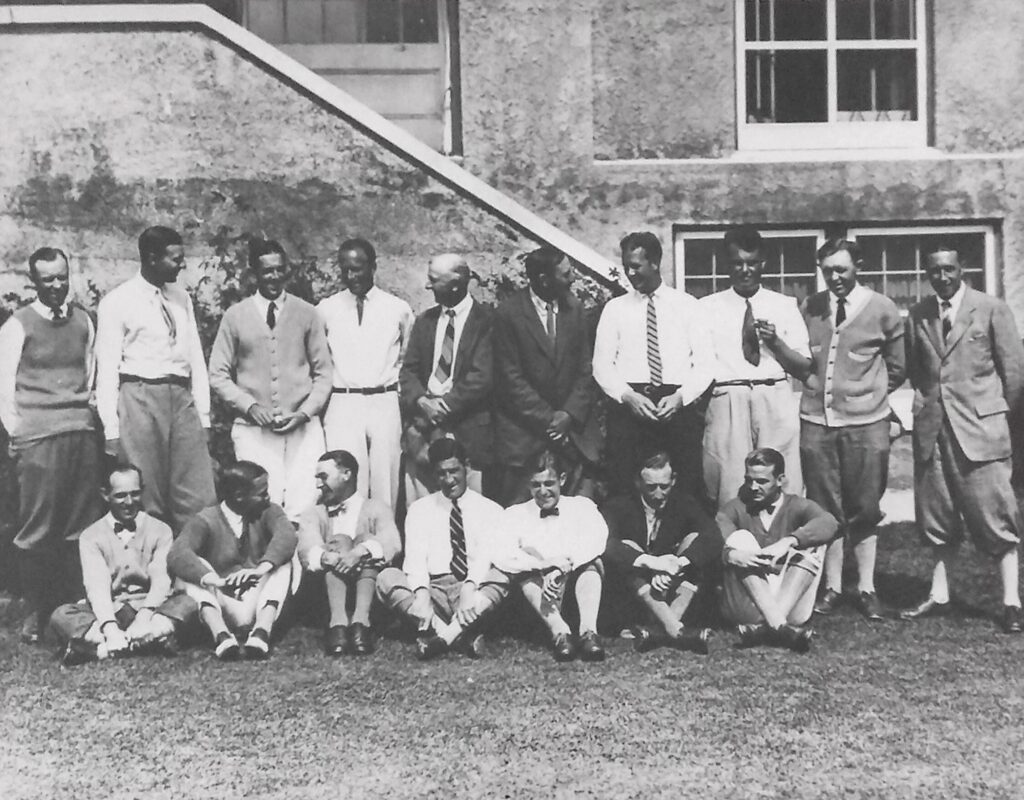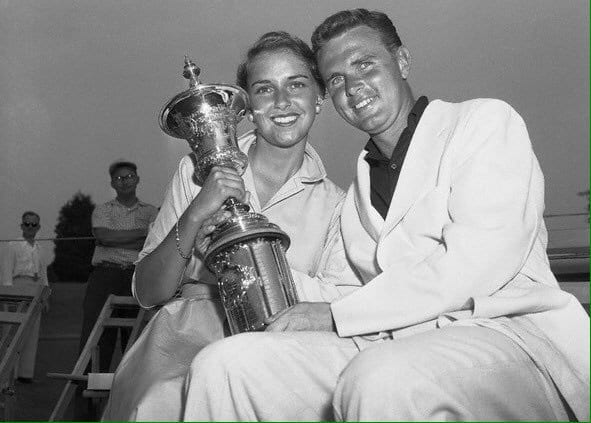words by Dr Darragh Garrahy
(Chief Walker Cup and useless trivia correspondent)
—
Sam’s dreadful mix-up of The Brothers Scott from Nairn (Sandy and Calum) on a recent podcast got me thinking about the players who, for various reasons, couldn’t tee it up in a Walker Cup when selected or were close to selection. And indeed, those who put club to ball when in less-than-stellar shape. This is a very non-exhaustive list of some personnel changes in the history of the storied cup.
Perhaps the most well-known dropout was in the inaugural Walker Cup at NGLA in 1922 when GB&I Captain Robert Harris fell ill. Bernard Darwin, who was travelling to cover the match for The Times of London, stepped in and defeated William Fownes in his singles match 3/1, having lost the first three holes. Fownes was no slouch, being the 1910 US Amateur winner. His father was Henry, the founder of Oakmont Country Club.

Moving on from 1922, perhaps the next significant casualty in the Walker Cup was the cup itself in 1932 at Brookline when the match was played during a total eclipse of the sun. Leonard Crawley of GB&I hit the cup on the fly and dented it after an errant iron shot on the 18th. Crawley, like Darwin, was a golf correspondent, and he later wrote about how the cup eventually became the victim of his errant five iron into the final green.
Crawley was at a cocktail party on the ship bringing the team to the USA for the match when a box of matches exploded in his hand, rendering him unavailable for play due to severe burns. The Americans were dominating the visitors after day one, and John de Forest and Jack Bookless left a note for GB&I captain Tony Torrance saying they were going out to sample the Boston nightlife and would not be available for selection the next day. Crawley had to play the next day with a surgeon following along, tending to his bandages. He came to the 18th having never played the hole. He agreed with his one-armed caddie, Joe Smiley, to go with a five iron and flushed a bullet at the flag. A gentle ping signalled it had hit the crown of the cup, which was set up on the presentation table behind the green.

Crawley was never short of an opinion and decades later opined that personnel changes should have been made on both sides for reasons other than illness: he stated that the USGA should never have picked Harvie Ward in 1959 after they had suspended him for a year previously for breaching his amateur status. He also wrote that Jack McLean and Hector Thomson should never have played for GB&I as they weren’t up to the standard required. McLean played in ’34 and ’36, losing 3 out of 4 games, while Thomson won half of his 4 games from his outings in ’36 and ’38. Crawley – the firebrand writer with an explosive pen and matchboxes in hand.

Two weeks before the 1959 Cup at Muirfield, where a young Jack Nicklaus starred, W.D. Smith was drafted into the home side to replace James Walker, who had sustained a knee injury in a car crash. Smith only played on day two, where he was placed last in the singles, away from the main action (the USA had already whitewashed GB&I on day one). His reward for this unenviable position was to meet Nicklaus and go down 5/4.
The youngest member of the Majesticks LIV team by 21 years, Sam Horsfield, pulled out of the 2015 iteration of the Cup at Royal Lytham due to visa issues and concerns that he wouldn’t be allowed to re-enter the USA to start the college golf season with his Florida Gator teammates.
Things have become significantly less dramatic, injury-wise, since the cocktail party days. Michael Thorbjornsen had to pull out of the 2023 running of the Cup at St. Andrews due to a neck injury.
A gastrointestinal illness raged through the camps at the 2021 staging in Seminole, as referenced in the Cookie Jar reflection piece (https://cookiejargolf.com/the-49th-walker-cup-a-seminole-reflection/), causing multiple replacements.
The amateur game perhaps reached its peak of chaos and charm at that cocktail party on The Britannic in 1932.






